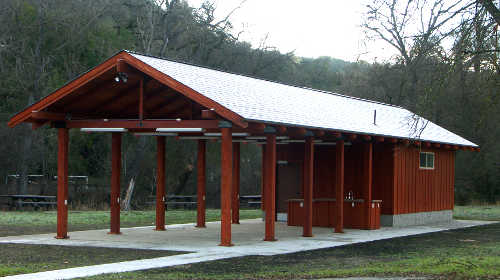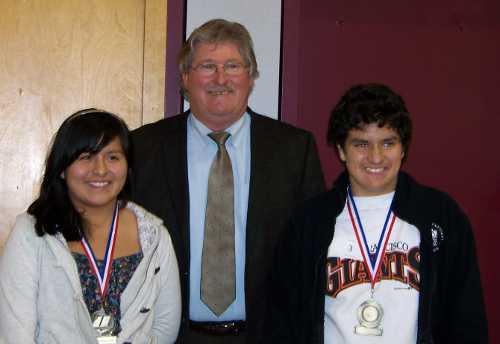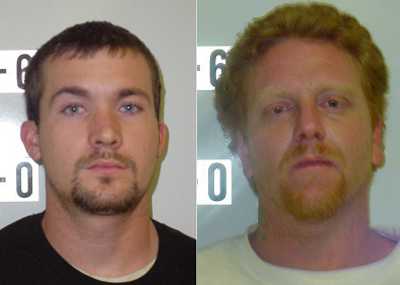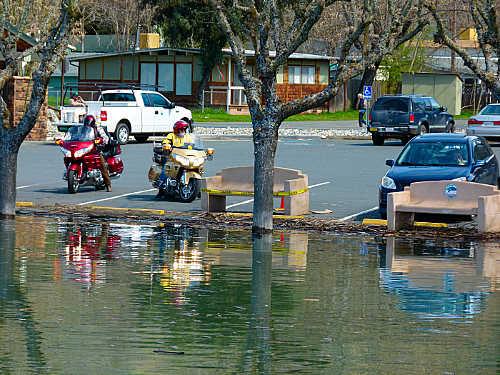LAKE COUNTY, Calif. – February's unemployment figures showed improvement not just across the state and nation, but in Lake County as well.
The latest figures released by the California Employment Development Department put Lake County's February unemployment rate at 19.2 percent, down from a revised January figure of 19.8 percent.
That most recent figure ties with Lake County's February 2010 unemployment rate, also 19.2 percent, according to state statistics.
The most recent figures placed Lake County at No. 49 statewide for unemployment.
The outlook was marginally better statewide, with California's February rate at 12.2 percent, down from 12.4 percent in January, which also was the February 2010 rate.
The unemployment rate is derived from a federal survey of 5,500 California households.
The report showed that California's nonfarm jobs increased by 96,500 during February to a total of 14,055,900, according to a survey of 42,000 state businesses that is larger and less variable statistically. The year-over-year change – from February 2010 to February 2011 – showed an increase of 196,300 jobs, or an increase of 1.4 percent.
The U.S. unemployment rate also decreased in February, to 8.9 percent, its lowest rate since April 2009, according to the U.S. Bureau of Labor Statistics. The nation's unemployment was 9 percent in January and 9.7 percent in February 2010.
Lake County's workforce in February included 24,420 people, with 4,680 people out of work. That's compared to January's figures of 24,480 workers and 4,840 unemployed.
Marin County has the state's lowest unemployment in February, at 7.8 percent, with the highest unemployment in the state found in Colusa County, where it's at 27.1 percent.
Lake's neighboring counties registered the following unemployment rates and statewide ranks: Colusa, 27.1 percent, No. 58; Glenn, 18 percent, No. 43; Yolo, 15 percent, No. 33; Mendocino, 12.1 percent, No. 19; Napa, 10.3 percent, No. 10; and Sonoma, 10.2 percent, No. 9.
Within Lake County itself, Upper Lake continued its run as the area with the lowest unemployment, with a 10 percent rate in February. Clearlake Oaks reported the highest rate, 28 percent, according to the state report.
The following unemployment rates were reported for other areas of the county, from highest to lowest: Nice, 28.1 percent; city of Clearlake, 27.4 percent; Lucerne, 20.1 percent; Kelseyville, 19.5 percent; Middletown, 19.4 percent; city of Lakeport, 18.5 percent; Cobb, 17.2 percent; Lower Lake, 16.2 percent; Hidden Valley Lake, 15.9 percent; and north Lakeport, 15.3 percent.
Dennis Mullins of the Employment Development Department's Labor Market Information Division said Lake County added 200 jobs in February, ending the month with a total of 12,170 jobs.
He said seven industries gained jobs or were unchanged over the month and four declined.
Month-over job growth occurred in the farm and leisure and hospitality categories, which Mullins said gained 240 and 10 jobs, respectively.
Industries with no change in job numbers in February were manufacturing, information, financial activities, professional and business services, and other services, Mullins reported.
Among the categories that lost jobs, total government employment was down 20 jobs in February, putting that category 100 jobs below its February 2010 level, he said.
Mullins said private educational and health services also lost 20 jobs in February, and mining, logging and construction, and trade, transportation and utilities lost 10 jobs each.
Report shows areas of job growth
The Employment Development Department said a federal survey of households, done with a smaller sample than the survey of employers, showed an increase in the number of employed people, and estimated the number of Californians holding jobs in February was 15,917,000, an increase of 12,000 from January, but down 36,000 from the employment total in February of last year.
The number of people unemployed in California was 2,202,000 – down by 44,000 over the month, and down by 49,000 compared with February of last year, the state said.
The state's report on payroll employment – wage and salary jobs – in the nonfarm industries of California totaled 14,055,900 in February, a net gain of 96,500 jobs since the January survey. This followed a gain of 700 jobs, as revised, in January.
February's report showed that 10 categories – mining and logging; construction; manufacturing; trade, transportation and utilities; information; financial activities; professional and business services; educational and health services; leisure and hospitality; and other services – added jobs over the month, gaining 97,700 jobs.
Professional and business services posted the largest increase over the month, adding 39,700 jobs, the state said.
Showing job declines statewide – as it had locally – was the government category, declining by 1,200 jobs, the state reported.
The state said a year-over-year comparison – February 2010 to February 2011 – showed nonfarm payroll employment in California increased by 196,300 jobs, or 1.4 percent.
Eight industry divisions – mining and logging; construction; manufacturing; trade, transportation and utilities; information; professional and business services; educational and health services; and leisure and hospitality – posted job gains over the year, adding 261,300 jobs, the state said.
Professional and business services posted the largest gain on a numerical basis, adding 99,900 jobs, or an increase of 4.9 percent, while information posted the largest gain on a percentage basis, up by 5.8 percent or 24,800 jobs, the Employment Development Department reported.
Three categories – financial activities; other services; and government – posted job declines over the year, down 65,000 jobs, the report showed.
The Employment Development Department said the government category posted the largest decline on both a numerical and percentage basis, down by 62,000 jobs or 2.5 percent.
In state said there were 666,260 people receiving regular unemployment insurance benefits during the February survey week, compared to 603,946 in January and 714,145 in February 2010.
At the same time, new claims for unemployment insurance were 68,203 last month, compared with 63,331 in January and 63,766 in February of last year, the state said.
E-mail Elizabeth Larson at This email address is being protected from spambots. You need JavaScript enabled to view it. . Follow Lake County News on Twitter at http://twitter.com/LakeCoNews , on Facebook at http://www.facebook.com/pages/Lake-County-News/143156775604?ref=mf and on YouTube at http://www.youtube.com/user/LakeCoNews .

 How to resolve AdBlock issue?
How to resolve AdBlock issue? 










